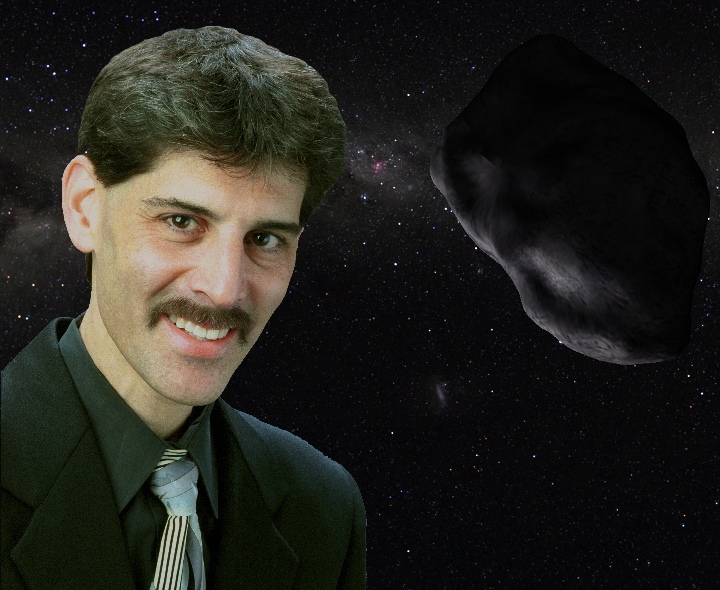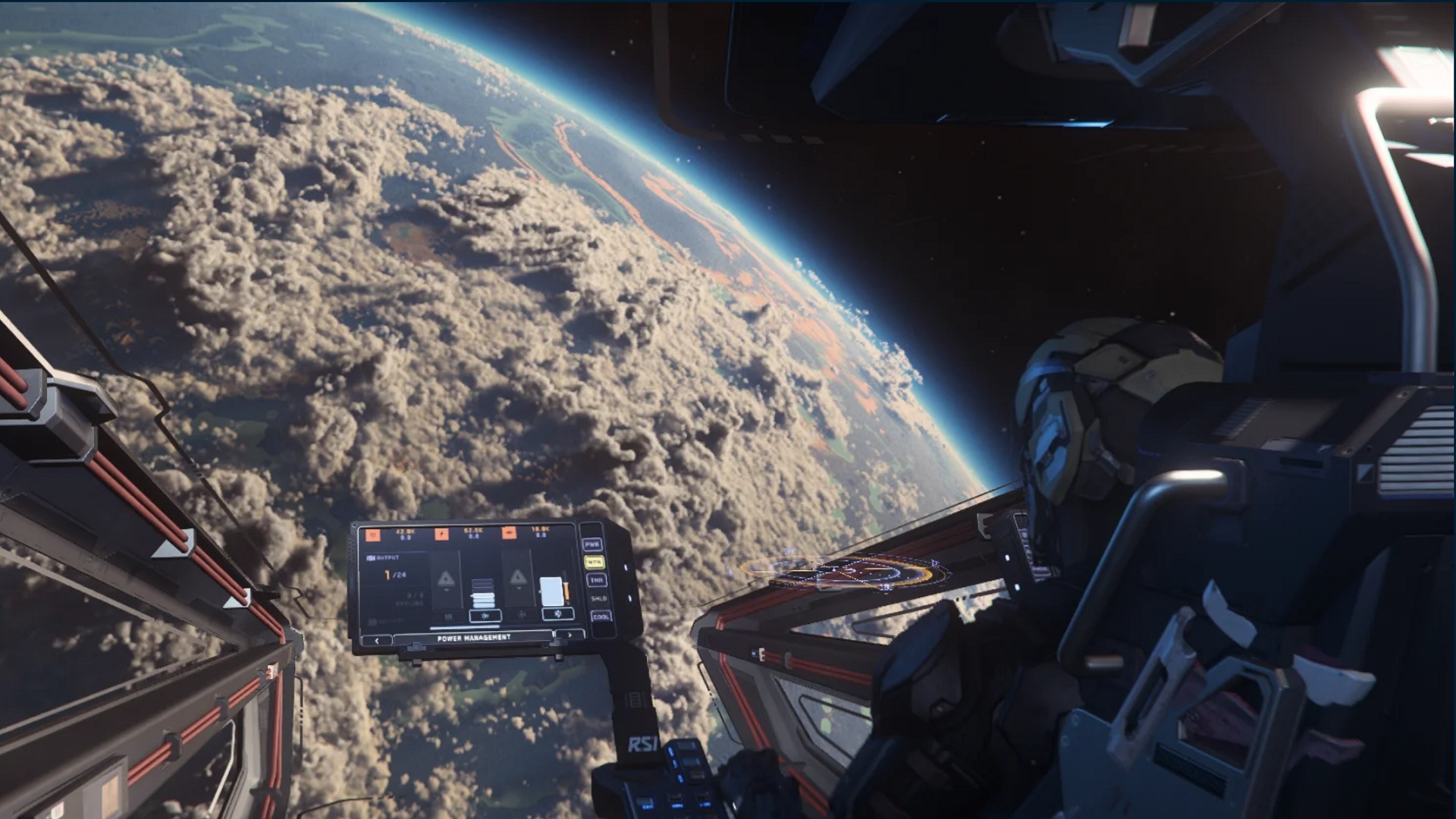Cosmic Collisions: A Striking New Planetarium Show
"Change isa constant in the Universe," Robert Redford's gentle voice tells us. We'reseated comfortably in the Hayden Planetarium within the Rose Center for Earth and Space at the American Museum of Natural History (AMNH) in New York City. But all around us celestial objects are spectacularly crashing intoone another. "Things going bump in the night" as AMNH President Ellen Futterhad told us by way of introduction to Cosmic Collisions, the newestspace show produced here. And every audience member who walks in willhave his or her world rocked.
It opens tothe public on Saturday, March 18th in New York and will immediatelybe distributed to AMNH's partners, the Denver Museum of Nature & Science, theShanghai Science and Technology Museum and GOTO Inc., one of the largest makersof planetarium hardware and programs. None of the partners are worried aboutsimultaneous distribution. Seems there're plenty of catastrophic smash-ups andsmack-downs to go around.
CosmicCollisionschronicles a paradigm shift. For ages of human history, the sky has beenperceived as gentle, majestic, and eternal. But that's not the way it isat all, we recently discovered. Precipitating events happen fast in the Cosmos.It's the aftermath that may take eons. We learn in this show, for instance,just how counter-intuitively rapid was the formation of our Moon. How do youlike one month?! And if you've never felt sympathy for dinosaurs before, waituntil you see for yourself what actually killed them, along with nearly 75% ofother life on Earth.
"We are amuseum about evolution; about process," says Mike Shara, Curator ofAstrophysics for AMNH and science warden of Cosmic Collisions, "How dospecies evolve? How does our Earth change? Our Milky Way Galaxy?" AMNH'sanswer: collisions are the agents of change at all scales.
We humanstend to see ourselves right in the middle of those scales - halfway betweenquarks and galactic super-clusters. From the safety of our padded chairsin the dome we see that some cosmic collisions are beautiful and harmless: thedelicate spark-flurries of a meteor shower as Earth swings forward throughremnants of a comet's tail. But other clashes would kill us, all of us,immediately. Looking back through time, it's clear that we are only here,able to make or enjoy planetarium shows, because of a confluence of collisionsthat rigged the game in favor of us, though almost surely not with usspecifically "in mind".
On thistopic, Cosmic Collisions plays it straight. The script neitheradmonishes those who believe in some form of intelligent design, nor does itpander to that possibility. It simply speaks the science, staying on the firmground of the proven, without provocation or cheap shots at faith-based beliefsystems.
"The showitself has evolved," Shara says. How could it not? With 3 major partners, 18outside providers of imagery, an in-house production team of 34, and 15external science advisors all providing input and improvements. Yet theproduction went together in record time: 18 months from clean screen to finalmix. That's faster than a speeding photon measured against typical BigPlanetarium production time. Especially when you consider that entire newsoftware applications had to be written to, for example, extrapolate 2D imagesof certain galaxies out into 3D volumetric space and through dramaticallyaccelerated time. But it's not computer code you see up there on thedome. It's imagery; incredible in that it's so thoroughly credible. And whoprovides the final measure of that imagery's success?
Get the Space.com Newsletter
Breaking space news, the latest updates on rocket launches, skywatching events and more!
"My realbosses are a horde of sixth-graders," exclaims show director Carter Emmart,referring to the average age of space show-goers. It's a tough challenge. Fortheir entire lives, this audience has been bombarded by X-Box styleinteractivity, cinematic surround sound, high-end animation, hyper-capablecharacters, A-list actors, superheroes, supernatural storylines... And it doesn'tmake planetarium producers' lives any easier that - compared to HDTV andtheatrical film--the technology of digital dome projection is really in itsinfancy. 3D animated images projected across a 100 foot dome simply cannot(yet) be as bright or as sharp or as fast as what you see on your laptop. Orwhat an 11 year-old sees at the arcade.
On theother hand, AMNH's Hayden/Rose Center is much more than just a screen. The showleverages AMNH's Digital Universe asset, an elegant virtual 3D charting toolcontaining accurate positions of billions of stars, clusters and galaxies, alldeveloped within the Museum's walls. And AMNH actually does cutting edgenew science here. With a one-two punch of world class researchers andsupercomputing horsepower, the team that built Cosmic Collisions wasable to visualize phenomena with previously unseen clarity. The raw dataleaps to life, quite literally right before our eyes. One stunning example isthe mixing interaction of our Milky Way and the Andromeda galaxy; a swirlingdance of fecundity as we watch new epochs of star formation igniting at thevisual rate of 40 million years per second! This represents a new methodof astrophysics; a third modality called Modeling added to classical Theory andObservation.
Particularkudos must go Ryan Wyatt, Lead Science Visualizer at AMNH, the individualresponsible for taking messy, confusing jumbles of numerical datasets providedby astronomers and transmogrifying them into emotionally moving pictures--allthe while retaining the full accuracy and precision of the astronomers'original measurements. If it sounds like witchcraft, it very nearly is; aroiling silicon cauldron demanding a pinch of intuition, at exactly the rightmoment, in order to taste just right.
Even so, noshow can be perfect. Those looking very hard to find fault may notice somequirks. There's not a single mention of the most obvious indicator thatcollisions are a fact of celestial life: the cratered current face of Earth'sMoon. Only one star crash is depicted--and only very fleetingly. Yet realstellar collisions come in a fascinatingly broad range. From tiny, denseneutron star smacks that are all over with in milliseconds to, say, a whitedwarf tearing through a red giant over the course of ten years or more! Thesewould have made for awesome animations. Also, a great deal of show-time isspent on solar physics--stunning, great science to be sure, but the connectionto "collisions" is as tenuous as the beautiful auroras that the programdepicts. In fact, the solar storm stuff is so good that it might have beenbetter saved for its own stand-alone show.
CosmicCollisions alsomakes a choice to restrict its narrative to an episodic presentation of typesof occurrences. But that comes at the expense of telling a memorable story.It's a bit of a lecture. The intended audience would probably be bettercaptivated by more of a movie. Phenomena are generalized, rather thanpersonified with real examples we might have seen on the news. No reference toShoemaker Levy 9, the comet that woke us up to the threat of impactingice-balls, for example. Not a passing tip of the hat to NASA's Deep Impactmission, a purposeful collision for the sake of great science. This choice isunderstandable--it keeps the content evergreen--but it doesn't give a great creativeactor / director / artist like Redford much to sink his voice into. And itdoesn't leaving us feeling like we've experienced the collisions; only likewe've seen them and heard about them. Other recent large scale planetariumshows, at other institutions, have trended away from quite so academic a tone.
These areminor quibbles. Not one of the hard-boiled professional journalists in whosecompany I watched the show walked out of it unchanged. All of us--even thewriters of astronomy publications--learned at least one or two facts we hadn'tknown when we sat down. And we remembered it isn't really about us, after all.
If only 10%of any audience that sees Cosmic Collisions really gets it that it's upto them to be a dynamic force in the Universe, rather than simply getting hitwith whatever Nature deals, think of the way technology policy--especially spacedevelopment--would change.
And if onlyone grade school kid per showing is motivated to pursue a career in science,we'd have orders of magnitudes more scientists than we have now entering theirprime in less than two decades. Think of the impacts they'll make ontheir world ...
Join our Space Forums to keep talking space on the latest missions, night sky and more! And if you have a news tip, correction or comment, let us know at: community@space.com.
Dave Brody has been a writer and Executive Producer at SPACE.com since January 2000. He created and hosted space science video for Starry Night astronomy software, Orion Telescopes and SPACE.com TV. A career space documentarian and journalist, Brody was the Supervising Producer of the long running Inside Space news magazine television program on SYFY. Follow Dave on Twitter @DavidSkyBrody.

